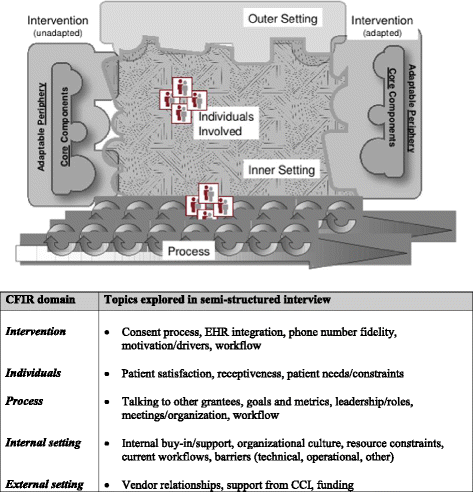Qualitative analysis of programmatic initiatives to text patients with mobile devices in resource-limited health systems
- PMID: 26851941
- PMCID: PMC4744448
- DOI: 10.1186/s12911-016-0258-7
Qualitative analysis of programmatic initiatives to text patients with mobile devices in resource-limited health systems
Abstract
Background: Text messaging is an affordable, ubiquitous, and expanding mobile communication technology. However, safety net health systems in the United States that provide more care to uninsured and low-income patients may face additional financial and infrastructural challenges in utilizing this technology. Formative evaluations of texting implementation experiences are limited. We interviewed safety net health systems piloting texting initiatives to study facilitators and barriers to real-world implementation.
Methods: We conducted telephone interviews with various stakeholders who volunteered from each of the eight California-based safety net systems that received external funding to pilot a texting-based program of their choosing to serve a primary care need. We developed a semi-structured interview guide based partly on the Consolidated Framework for Implementation Research (CFIR), which encompasses several domains: the intervention, individuals involved, contextual factors, and implementation process. We inductively and deductively (using CFIR) coded transcripts, and categorized themes into facilitators and barriers.
Results: We performed eight interviews (one interview per pilot site). Five sites had no prior texting experience. Sites applied texting for programs related to medication adherence and monitoring, appointment reminders, care coordination, and health education and promotion. No site texted patient-identifying health information, and most sites manually obtained informed consent from each participating patient. Facilitators of implementation included perceived enthusiasm from patients, staff and management belief that texting is patient-centered, and the early identification of potential barriers through peer collaboration among grantees. Navigating government regulations that protect patient privacy and guide the handling of protected health information emerged as a crucial barrier. A related technical challenge in five sites was the labor-intensive tracking and documenting of texting communications due to an inability to integrate texting platforms with electronic health records.
Conclusions: Despite enthusiasm for the texting programs from the involved individuals and organizations, inadequate data management capabilities and unclear privacy and security regulations for mobile health technology slowed the initial implementation and limited the clinical use of texting in the safety net and scope of pilots. Future implementation work and research should investigate how different texting platform and intervention designs affect efficacy, as well as explore issues that may affect sustainability and the scalability.
Figures
References
-
- Institute of Medicine. America’s Healthcare Safety Net: Intact but Endangered. 2000.
Publication types
MeSH terms
Grants and funding
LinkOut - more resources
Full Text Sources
Other Literature Sources
Medical



